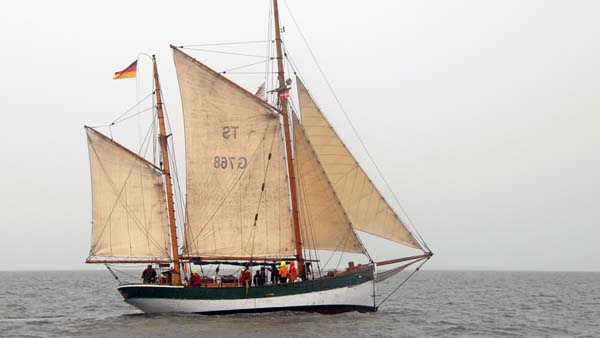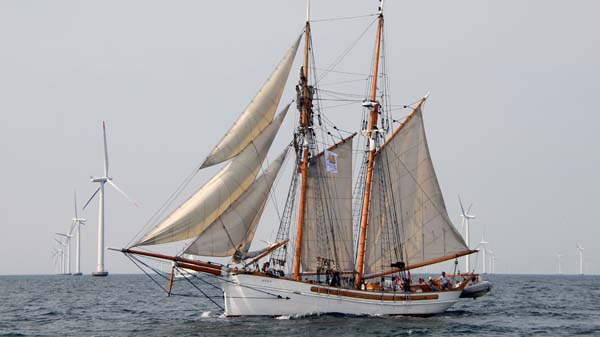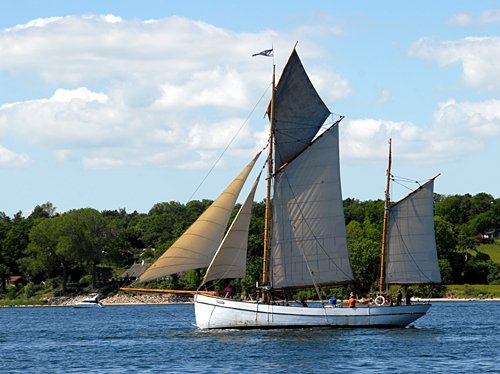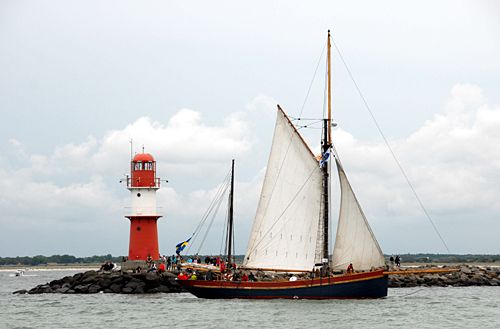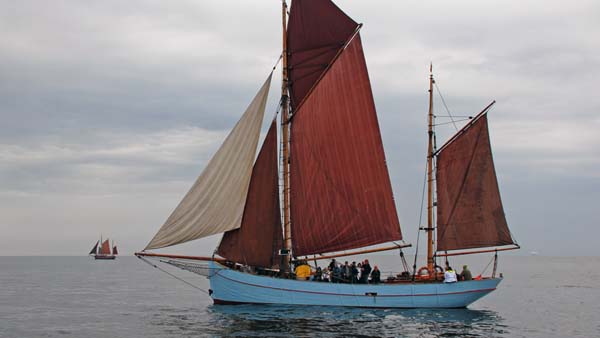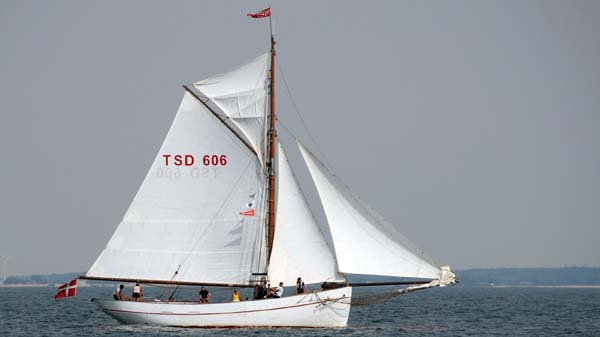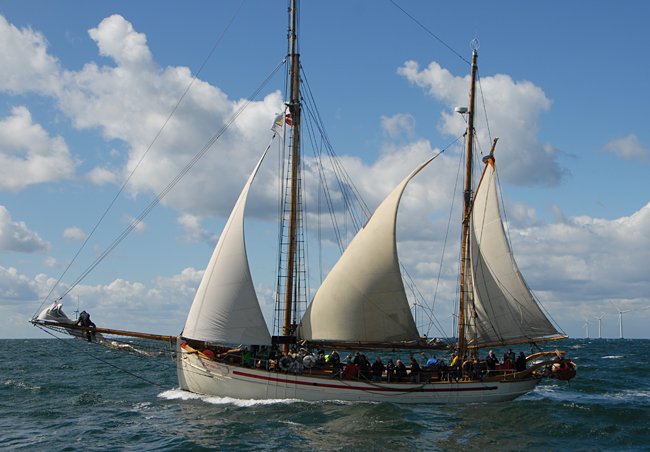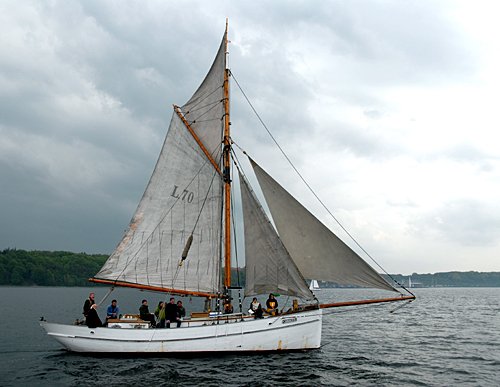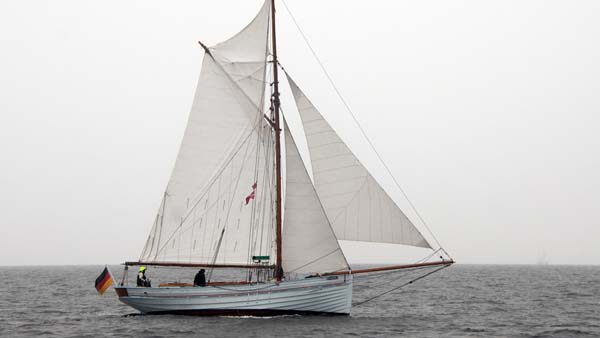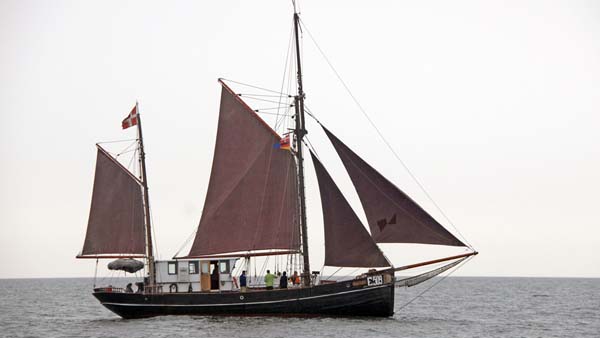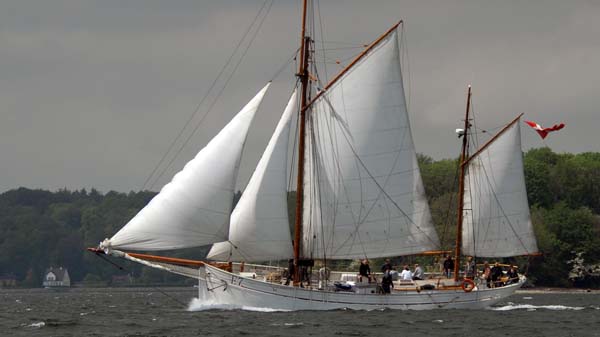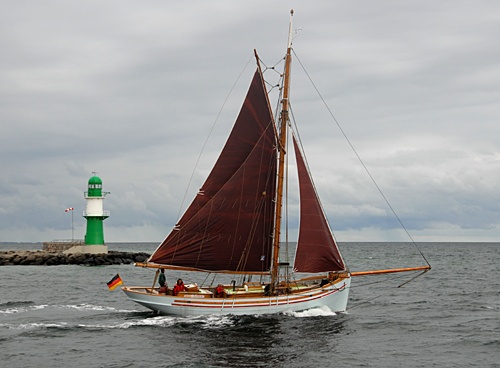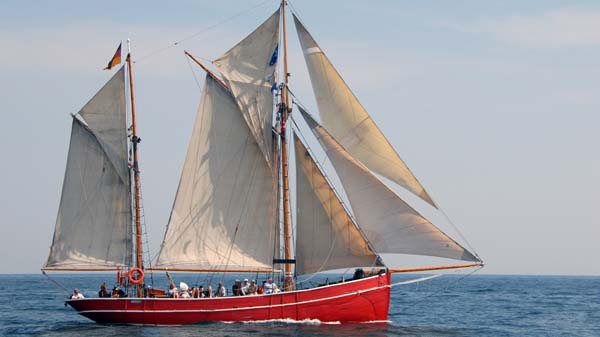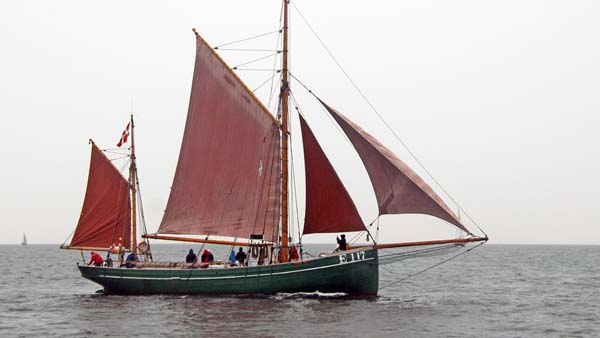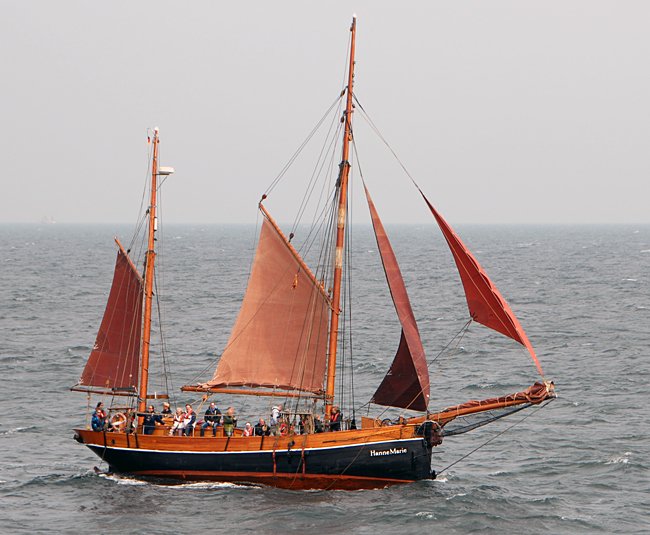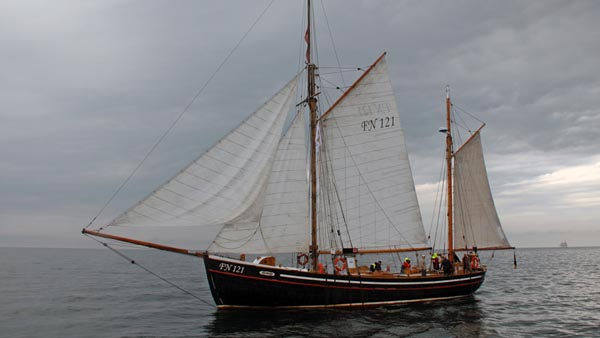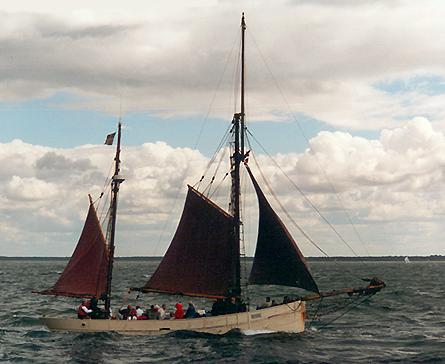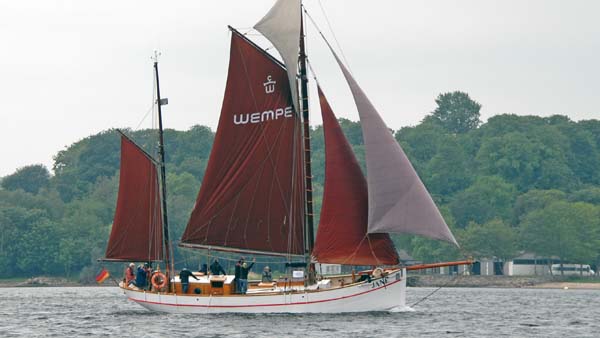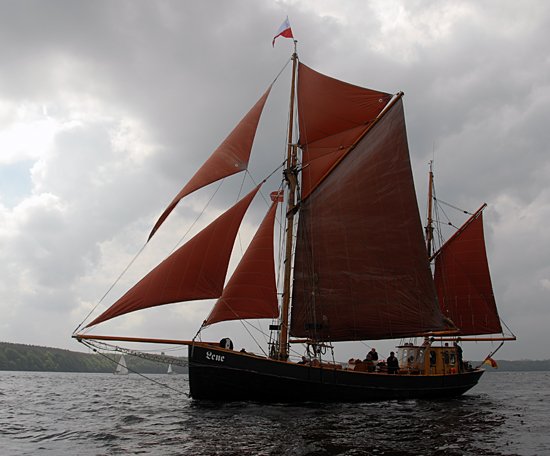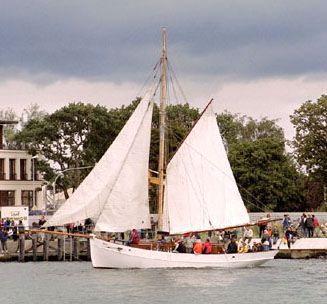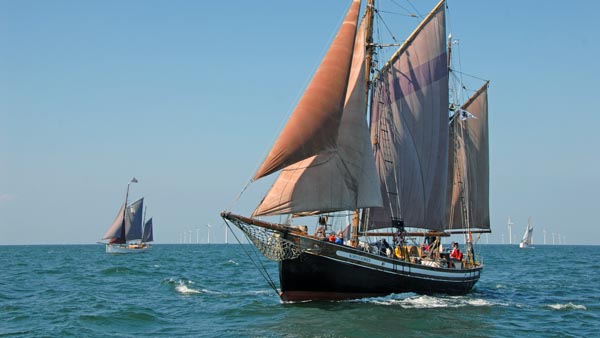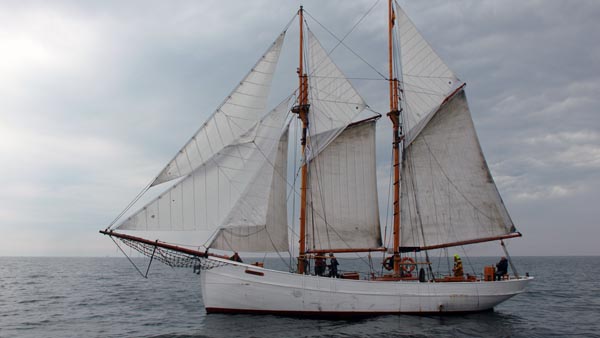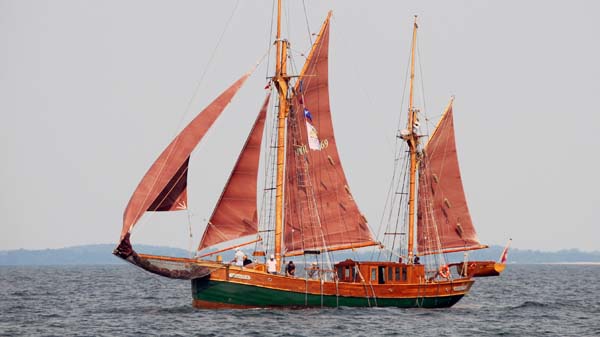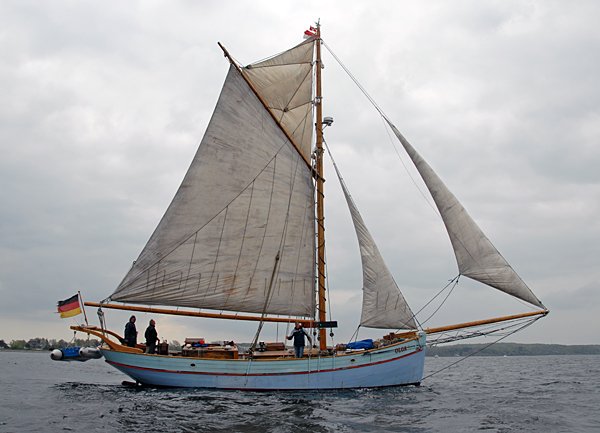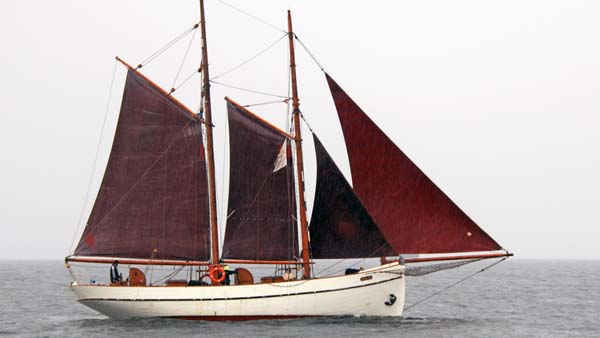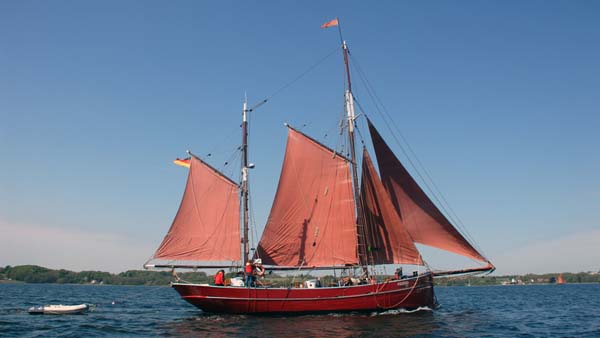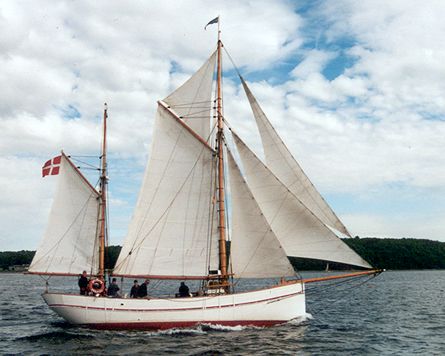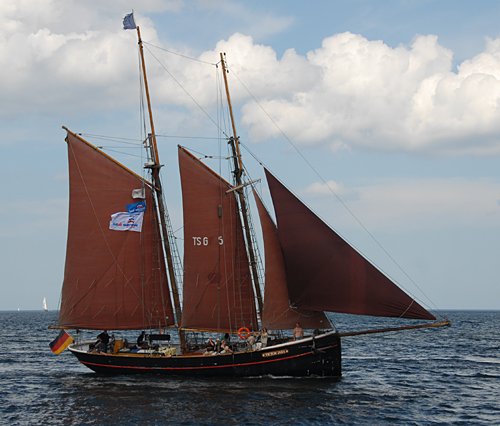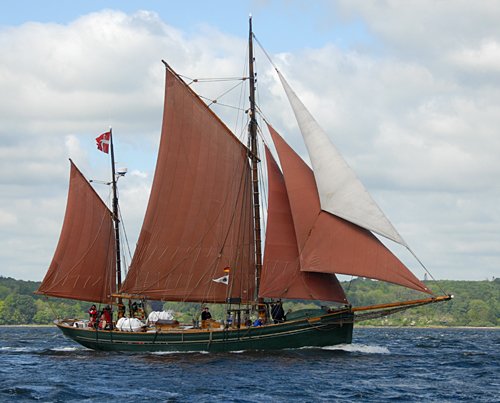Last update:
Hajkutter Festival og Regatta from Nysted to Rostock
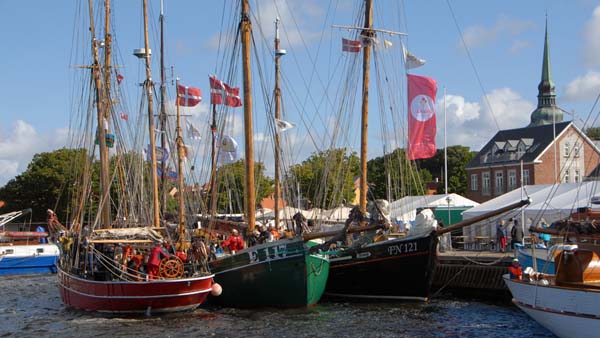
Habour of Nysted
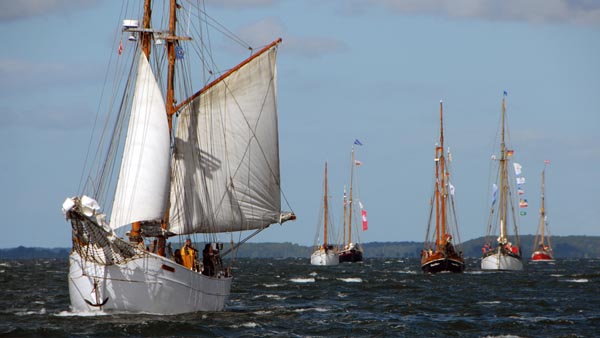
Hajkutter before the regatta start
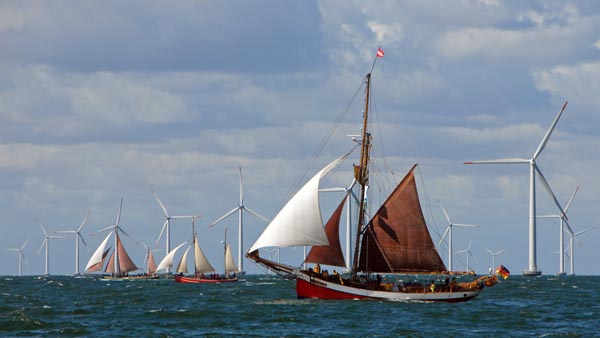
Hajkutter regatta 2016
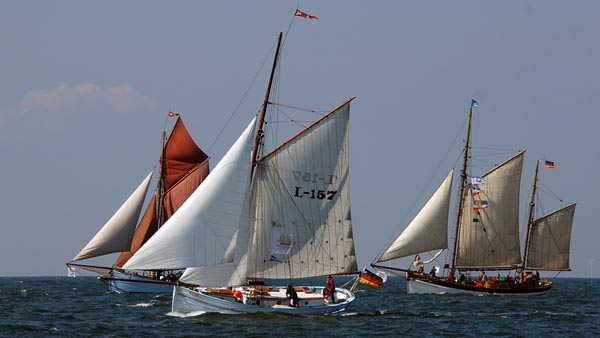
Hajkutter regatta 2017
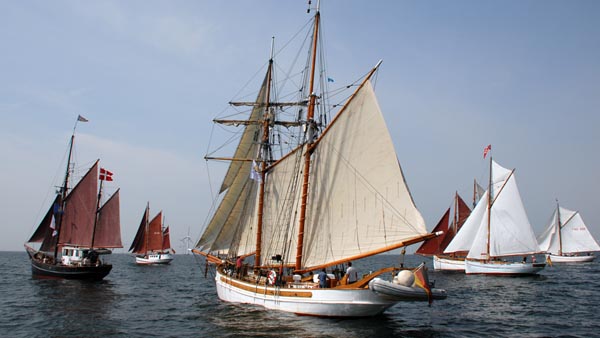
Hajkutter regatta 2018
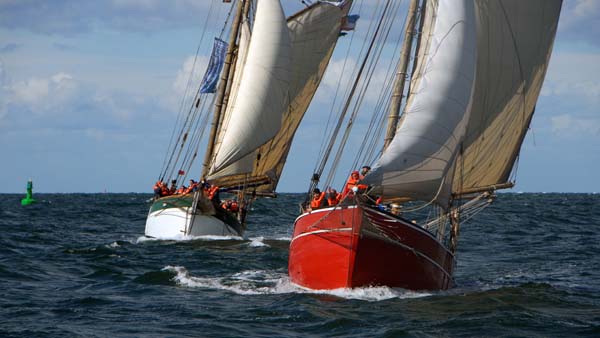
Hajkutter Alexa and Gefion
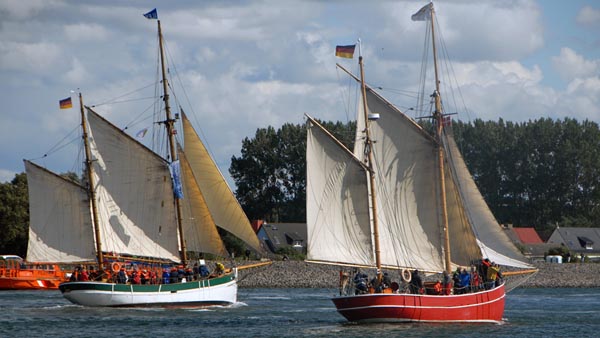
Sail-in to Warnemünde
Words have got around that the operators of Hajkutters on the German and Danish Baltic Sea coasts have been celebrating a special kind of family reunion for several years in Nysted.
There are of course the ships that are in the focus here, but also a lot of music, snack and socializing.
Since 2009, on the first weekend in August, immediately before the Hanse Sail in Rostock, in
the small Danish coastal town of Nysted the Hajkutter Festival is hosted. The focus is on these agile sailing ships, so-called Hajkutters, and there's a lot of handmade live music.
Between 10 and 20 Hajkutters from the countries bordering the Baltic Sea take part every year. The conclusion of this maritime festival is the regatta from Nysted to Rostock,
with all participating say goodbye to the Hajkutters with a gun salute from historic cannons.
In recent years, wind and weather have seldom been so kind to the ships and crew that they reach their port of destination Rostock under sails in time. Calm or too strong wind
from an unfavorable direction often led to course relocations, shortening of the sailing route or to abandon the regatta. But the crews fondly remember the year 2012, when a
regular race could be held for the first time. In 2016 even all participating sailing ships reached the goal within the allotted time.
In the Hajkutter Regatta, every participating ship is a winner. Thanks to various sponsors, everyone of the participants are paid an entry fee to help preserve the traditional ships.
The so-called Hajkutter tax results from the ratio of the sum of sponsorship contributions and the total length of all participating ships.
Hajkutter
Witnesses of the Danish fishing history in the North and Baltic Seas
A Hajkutter, in Danish also Hajer, in German Haikutter, directly translated shark cutter, is a former Danish fishing cutter.
However despite the term "haj" or "shark" in the labelling this ship type has nothing to do with catching sharks. Rather, these fishing cutters were
the first in the Danish sea fishing industry to work with auxiliary engines. With their help, the fishing nets could be launched and taken in again
independent from the wind and without action from dinghies using deck winches while at anchor. The motorization, first to drive the deck winches, then the dinghies and
finally the cutter itself, was a decisive factor to the type of ship that we still know as the Hajkutter today.
The fishing technique that was used on the ships was also important for the development of the Hajkutter. The fishing net, a so-called Snurrewade, in Danish Snurrevod,
is a ring-shaped net that was not dragged like a trawling net behind the ship. It was deployed in a ring and then pulled in over the bottom towards the anchored Hajkutter.
That is why the Hajkutters are sometimes called Snurrewadenkutter or in Danish Snurrevodkutter. After a trip to the fishing site, usually under sail at first,
one used on a Hajkutter the machine technology for deploying and retrieving the fishing net. This technical advantage brought that fishermen get better catches in less time,
which is why the non-motorized colleagues give them the name Hajer. That wasn't meant nicely. These ships were "voracious like sharks" at the fishing site.
In the beginning, Hajkutters weren't any special. This is how all motorized cutters in the fishery with the Snurrevod were called around 1900. The increasing economic importance
of sea fishing in Denmark after the turn of the century meant that more cutters were needed. A type of ship with a length of 12 to 18 meters, a pronounced sheer,
a sharp underwater hull and a round, far overhanging stern became accepted. The typical hull shape is strongly influenced by pure sailing vessels of the 19th century.
The material used was oak on wooden frames. The planking was carried out using the carvel construction method. Most of these ships originated between 1915 and 1935,
among others at the Danish shipyards Ohlsen or Hjorne & Jacobsen in Frederikshaven, at the Nipper brothers or at Karstensen & Hinrichsen shipyards in Skagen or at N.P. Jensen
shipyard in Esbjerg. About 8,000 cutters were in service in the Snurrevod fishery around 1950.
In the beginning, the Hajkutters were sailing ships with auxiliary engines, rigged as a cutter or ketch with a significantly smaller mizzen mast. Today there are also
Hajkutters with a schooner rig. From the 1920s, sailing lost its importance compared to machine power. The stronger the machines became, the smaller the sails became,
until they were finally abandoned entirely. Masts were repurposed to loading booms that were needed to hoist the fishing net or to unload the catch.
Most of the surviving Hajkutters now sail as recreational and traditional ships. Where the corf or the storage space for the catch has been, today the cabins and meeting
rooms for fellow sailors are built in. This is how they keep functional and continue to be used and serve as living witnesses to the history of the Danish sea fishing.
Further reading
Volker Pesch:
"Der Haikutter und die dänische Seefischerei im 19. und 20. Jahrhundert",
Piekfall, Mitteilungsblatt für die Freunde des Gaffelriggs, Nr.99, 2009,
Piekfall-Archiv
Some Hajkutters are included in the Tallship-fan data collection.

